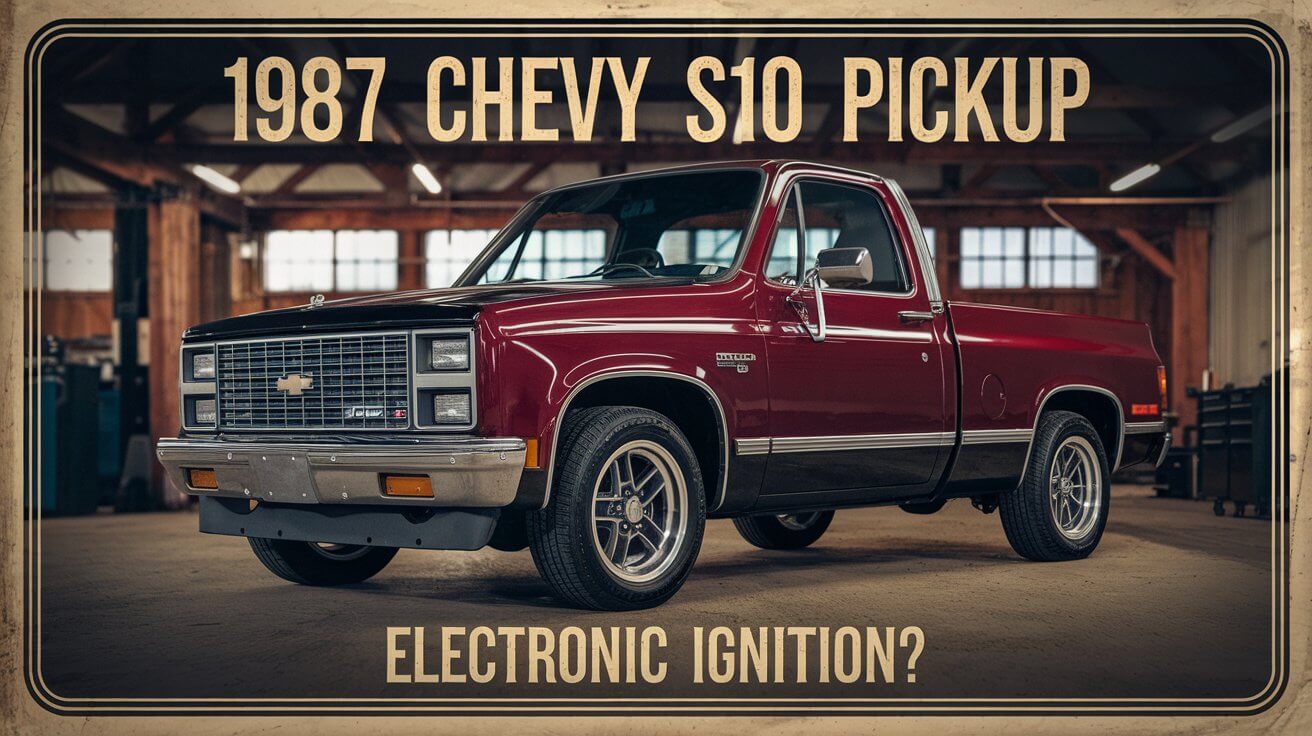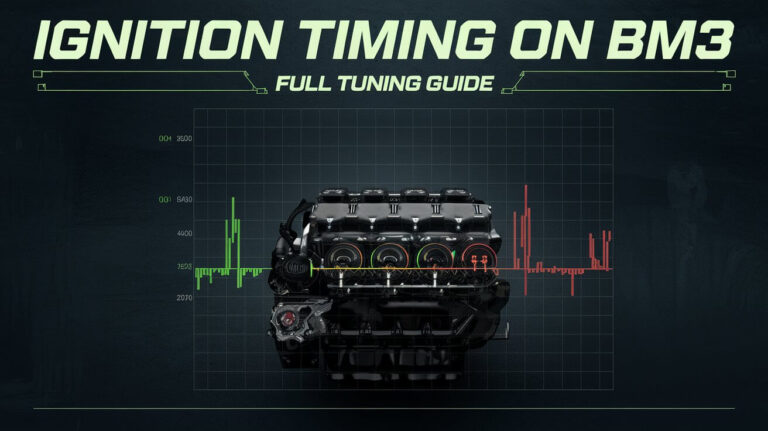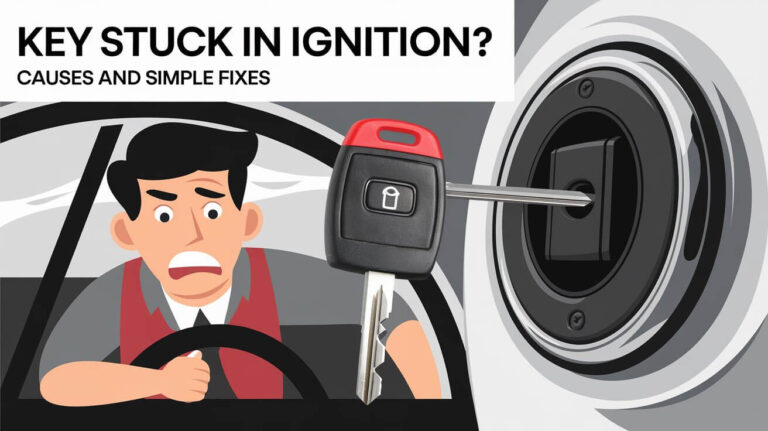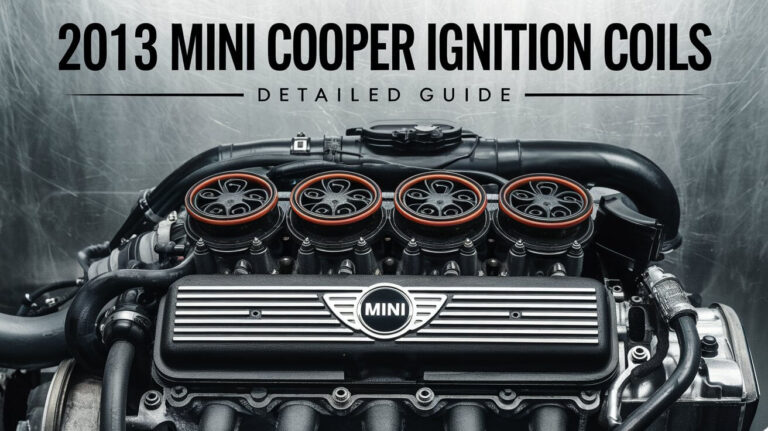Does an 87 Chevy S10 Pickup Have Electronic Ignition?

The 1987 Chevy S10 pickup does indeed feature an electronic ignition system. This system replaced the older, mechanical ignition setups used in earlier vehicles, offering more reliability and ease of maintenance. The introduction of electronic ignition systems was a significant step forward for automotive technology in the late 20th century, enhancing both fuel efficiency and performance. In this article, we’ll explore the ignition system of the 1987 Chevy S10 in great detail, including its components, common issues, and maintenance tips to ensure smooth operation for your vehicle.
What is Electronic Ignition?
Before diving into the specifics of the 1987 Chevy S10’s ignition system, it’s important to understand what an electronic ignition is and how it differs from traditional systems. An electronic ignition system relies on electronic components to generate the high-voltage spark needed to ignite the air-fuel mixture in the engine’s cylinders. This system eliminates the need for mechanical parts like points and condensers, which were commonly found in older ignition systems.
Benefits of Electronic Ignition
- Improved Efficiency: The precision of electronic ignition results in more efficient combustion, which can lead to better fuel economy and overall performance.
- Reduced Maintenance: With fewer moving parts, electronic ignition systems require less maintenance and are less prone to wear and tear.
- Enhanced Reliability: Electronic components are generally more reliable than mechanical ones, reducing the likelihood of ignition-related issues.
Ignition System in the 1987 Chevy S10
The 1987 Chevy S10 pickup is equipped with an electronic ignition system, specifically utilizing a distributor-based design. This system was common in many vehicles from the 1980s and played a key role in ensuring the truck’s engine fired smoothly and consistently.
Did the 1987 Chevy S10 Have Electronic Ignition?
Yes, the 1987 Chevy S10 does have an electronic ignition system. The truck used a distributor-type ignition system, which incorporates an Ignition Control Module (ICM) that manages spark timing and distribution to the engine’s cylinders. The ICM works in conjunction with other components, such as the ignition coil and distributor, to deliver high-voltage sparks to the spark plugs.
Key Components of the 1987 Chevy S10 Ignition System
The electronic ignition system in the 1987 Chevy S10 consists of several crucial components that work together to produce the spark needed for combustion.
1. Ignition Control Module (ICM)
The ICM is a small but essential part of the ignition system that controls when the spark plugs fire. It sends signals to the ignition coil to generate the high-voltage spark needed for combustion. This module is known to be a common failure point in older vehicles, and it plays a vital role in ensuring the engine starts and runs smoothly.
2. Ignition Coil
The ignition coil in the Chevy S10 is responsible for converting the low voltage from the battery into the high voltage needed to create a spark at the spark plugs. Without the ignition coil functioning properly, the engine will misfire, fail to start, or run inefficiently.
3. Distributor
The distributor in the 1987 Chevy S10 is responsible for sending the high-voltage spark from the ignition coil to the correct cylinder at the right time. It ensures that the timing of the spark is precise, enabling smooth engine operation. The distributor also contains the rotor, which helps distribute the spark to each cylinder in sequence.
4. Spark Plugs and Wires
The spark plugs are the endpoint in the ignition system, where the high-voltage electricity is used to ignite the air-fuel mixture in the engine’s cylinders. The spark plug wires connect the distributor to the spark plugs and must be in good condition to ensure proper spark delivery.
Common Issues with the 1987 Chevy S10 Ignition System
Like any other vehicle, the 1987 Chevy S10 is susceptible to ignition system issues, particularly as the components age. Below are some common problems that owners may encounter, along with potential solutions.
Ignition Control Module (ICM) Failure
The ICM is a frequent source of ignition issues in older vehicles, including the 1987 Chevy S10. When the ICM fails, the engine may not start, or it may experience intermittent stalling or misfires. This is because the module controls when the ignition coil fires, and if it malfunctions, the timing will be off or non-existent.
Symptoms of a bad ICM:
- Engine won’t start
- Rough idling or stalling
- Intermittent misfires
- Lack of spark from the ignition coil
Solution: Replacing the ICM is usually the most effective fix. Thankfully, it’s not a particularly difficult or expensive repair, but using high-quality replacement parts is essential for reliability.
Faulty Ignition Coil
The ignition coil in the Chevy S10 can wear out over time, particularly after many miles of use. A faulty ignition coil will lead to weak or no spark, resulting in engine misfires, poor fuel efficiency, or the engine failing to start.
Symptoms of a bad ignition coil:
- Engine misfires
- Reduced fuel efficiency
- Rough idling or poor acceleration
- Difficulty starting the vehicle
Solution: Replacing the ignition coil can resolve these issues. In some cases, it’s recommended to replace all ignition coils at once, especially if the vehicle has high mileage.
Distributor Wear
Since the distributor is responsible for ensuring that the spark is delivered to the correct cylinder at the right time, any wear or damage can lead to poor engine performance. Worn-out distributor caps or rotors can cause misfires, rough running, and stalling.
Symptoms of a faulty distributor:
- Engine misfires or stalling
- Difficulty starting the engine
- Unusual engine noises (e.g., ticking or knocking)
- Rough idling
Solution: Replacing the distributor cap or rotor is a common maintenance task in older vehicles like the 1987 Chevy S10. It’s a straightforward fix that can greatly improve engine performance.
Spark Plug and Wire Issues
The spark plugs and wires in the Chevy S10 are critical for delivering the spark to the engine’s cylinders. Over time, these components can wear out, leading to reduced spark strength, misfires, and poor fuel efficiency.
Symptoms of bad spark plugs or wires:
- Engine misfires
- Poor fuel economy
- Loss of power or rough acceleration
- Difficulty starting the vehicle
Solution: Replacing the spark plugs and wires is a relatively simple and inexpensive task that can significantly improve engine performance.
Diagnosing Ignition Problems in the 1987 Chevy S10
If you’re experiencing ignition problems in your 1987 Chevy S10, there are several steps you can take to diagnose the issue. Below is a guide to troubleshooting common ignition system problems.
Step 1: Test the Ignition Control Module (ICM)
Using a multimeter, you can test the ICM to see if it’s sending the proper signals to the ignition coil. If the module isn’t functioning correctly, it may need to be replaced.
Step 2: Check the Ignition Coil Output
Use a spark tester to check if the ignition coil is producing a strong enough spark. If the spark is weak or nonexistent, the coil may be faulty.
Step 3: Inspect the Distributor
Check the distributor cap and rotor for signs of wear or damage. If the cap or rotor is cracked or worn, they will need to be replaced to restore proper spark distribution.
Step 4: Check Spark Plug Wires
Inspect the spark plug wires for any signs of wear, cracking, or damage. Worn-out wires can prevent the spark from reaching the engine’s cylinders, causing misfires or poor performance.
Replacing Components in the 1987 Chevy S10 Ignition System
Regular maintenance and occasional replacement of ignition system components are essential for keeping your Chevy S10 running smoothly. Below are some tips for replacing key components in the ignition system.
Replacing the Ignition Control Module (ICM)
To replace the ICM, you’ll need a few basic tools and a new ICM. The module is usually located near or inside the distributor, and replacing it is a fairly simple process that can be done in less than an hour.
Changing Spark Plugs and Wires
Replacing the spark plugs and wires is a common maintenance task that can improve fuel efficiency and engine performance. When replacing the spark plugs, make sure to gap them correctly to the manufacturer’s specifications.
Ignition Coil Replacement
If the ignition coil is failing, it’s best to replace it sooner rather than later. In some cases, replacing all ignition coils at once can prevent future issues.
Ignition System Upgrades for the 1987 Chevy S10
For those looking to enhance the performance of their Chevy S10, there are several ignition system upgrades available. Upgrading to high-performance ignition coils or spark plugs can improve combustion efficiency and increase horsepower.
High-Performance Ignition Coils
Upgrading to high-performance ignition coils can provide a stronger spark, resulting in better combustion and improved engine performance. These coils are designed to deliver more voltage, which can enhance both power and fuel efficiency.
Platinum or Iridium Spark Plugs
Replacing standard spark plugs with platinum or iridium plugs can offer better performance and longer lifespan. These plugs are more resistant to wear and can improve combustion, especially in older engines like the 1987 Chevy S10.
Preventative Maintenance for the Chevy S10 Ignition System
Regular maintenance is key to keeping your Chevy S10’s ignition system in top shape. Here are some preventative maintenance tips to help you avoid ignition-related issues.
Routine Checks
- Regularly inspect the ignition coil, distributor, and spark plug wires for wear or damage.
- Clean the distributor cap and replace it if necessary.
- Check spark plugs for signs from wear or fouling, and replace them as necessary to maintain a strong, consistent spark. Regularly check the spark plug gap to ensure it matches the manufacturer’s specifications.
Protecting Against Moisture and Corrosion
Moisture can interfere with the ignition system’s performance, especially in older vehicles like the 1987 Chevy S10. Ensure that all connections are dry and free from corrosion. Using dielectric grease on electrical connections can help prevent moisture intrusion.
Replacing Components at Regular Intervals
Although some components of the ignition system may last for many years, it’s a good idea to replace critical parts such as the ignition coil, spark plugs, and wires at regular intervals to avoid performance issues.
Conclusion
The 1987 Chevy S10 does indeed have an electronic ignition system, which includes components like the Ignition Control Module (ICM), ignition coil, distributor, and spark plugs. This system plays a crucial role in the truck’s performance, ensuring efficient combustion and reliable operation. Understanding how the system works, identifying common issues, and performing regular maintenance are key to keeping your Chevy S10 running smoothly for years to come. Additionally, there are numerous upgrade options available for those looking to enhance their truck’s ignition performance.
Whether you’re troubleshooting a malfunction or looking to modernize the ignition system, the 1987 Chevy S10 offers plenty of opportunities for both maintenance and performance improvements. By staying proactive and taking care of your truck’s ignition system, you can enjoy reliable performance and potentially extend the life of your vehicle.



